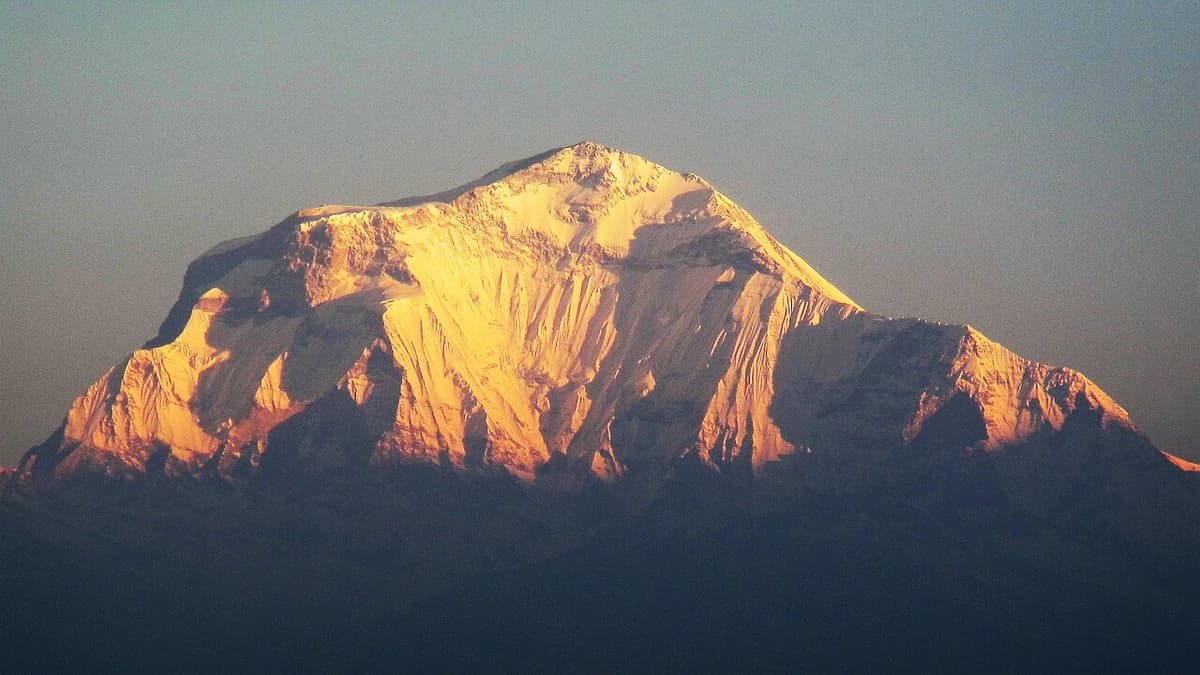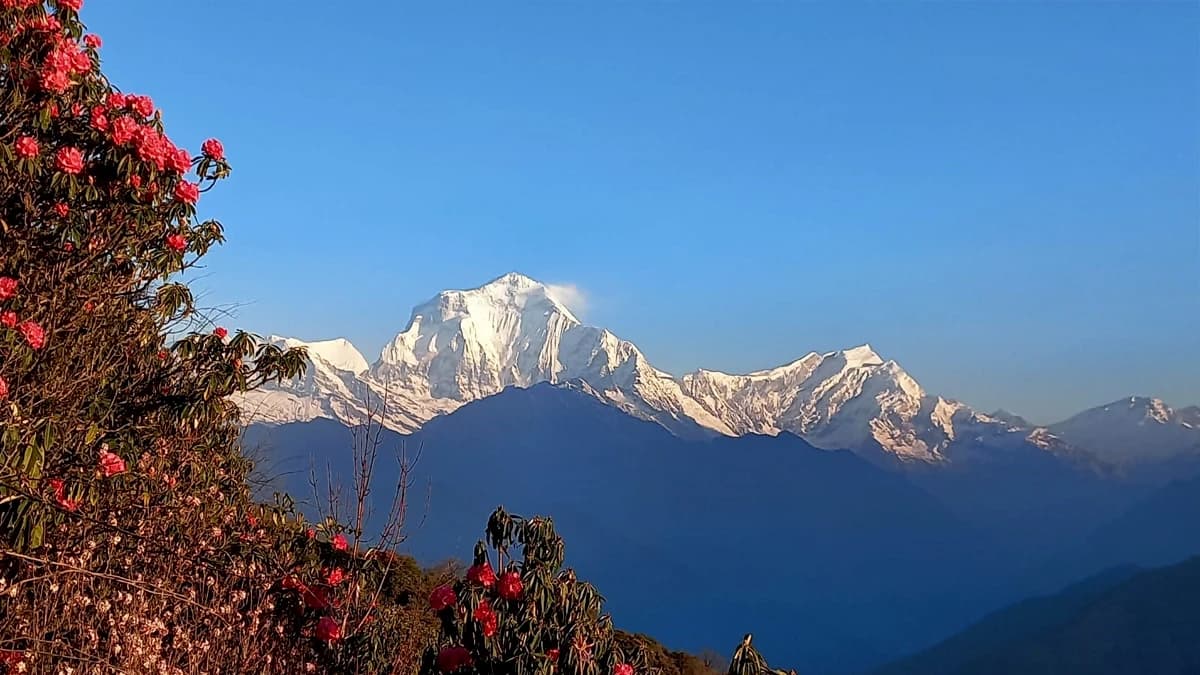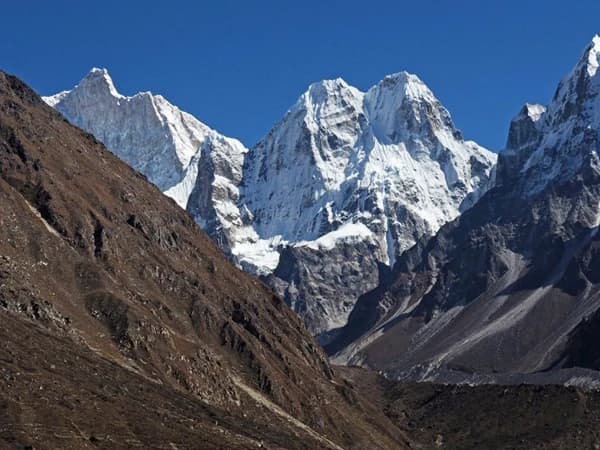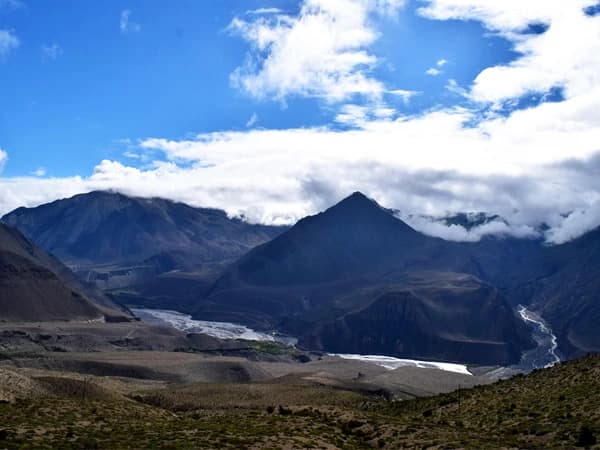Dhaulagiri Circuit Trek- 16 Day Package
The Dhaulagiri Circuit Trek is one of Nepal’s most remarkably adventurous trekking routes, offering a perfect blend of raw natural beauty and rich cultural diversity. It is an exhilarating journey to the remote, hidden, and heavenly beautiful Himalayan landscape that provides a complete adventure experience. A challenging camping trek brings you close foothills of the world’s seventh-highest mountain (Dhaulagiri-8167m) and encircles Mt. Dhaulagiri I along several passes and high Himalayan rugged terrain. This 16-day Dhaulagiri Trek itinerary covers the unexplored shadow Himalayas landscape, alpine meadow, and several high passes, including French Pass (5360 m) and Dhampus Pass (5240m). The trail offers panoramic views of Dhaulagiri, Tukuche Peak, Nilgiri, and the Annapurna ranges. This off-the-beaten-path adventure is physically demanding, requiring good fitness and prior high-altitude experience, but it is rewarded with unmatched Himalayan wilderness and serenity. Moreover, Dhaulagiri Circuit is ideal for those seeking a pure, immersive trekking experience in Nepal’s remote mountain landscapes. Book Dhaulagiri Trek with Himalayan Trekking Path Pvt. Ltd and enjoy its impeccable hospitality, an authentic trekking experience at a very reasonable price, led the trip by a professional Sherpa guide and a helpful support team. Bring a wonderful experience and lifetime memories as a souvenir after completing the Dhaulagiri Trek from Nepal.
Highlights of Dhaulagiri Circuit Trek
- Remote Wilderness: Traverse one of Nepal's most isolated and unspoiled trekking routes, far from commercial trails.
- Dhaulagiri Base Camp: Stand beneath the towering 8,167-meter Dhaulagiri, the world’s seventh-highest peak.
- Challenging Pass Crossings: Conquer the high-altitude French Pass (5,360 m) and Dhampus Pass (5,240 m), demanding physical endurance.
- Glacial Terrain: Trek across the Chhonbardan Glacier and the Hidden Valley, offering stark alpine beauty.
- Diverse Landscapes: Experience dramatic transitions from lush lowland forests to high-altitude snowfields.
- Cultural Immersion: Encounter traditional Magar villages and Tibetan-influenced communities along the trail.
- Rich Biodiversity: Hike through the Dhaulagiri Conservation Area, home to Himalayan flora and rare fauna.
- Off-the-Beaten-Path: Enjoy the serenity of a less-traveled route, ideal for seasoned trekkers seeking solitude.
- Hidden Valley Camp: Camp in the secluded Hidden Valley, surrounded by peaks above 6,000 meters.
- Scenic Mountain Vistas: Witness panoramic views of Dhaulagiri, Annapurna, Nilgiri, and Tukuche peaks throughout the trek.
Dhaulagiri Circuit Trek Itinerary: 16 Days
The Dhaulagiri Circuit Trek with Himalayan Trekking Path is a thrilling 16-day adventure through one of Nepal’s most remote and challenging trekking routes. This off-the-beaten-path journey offers a blend of high-altitude adventure, wilderness solitude, and breathtaking mountain views. The trek begins in Beni, gradually ascending through lush Magar villages like Babiyachaur, Dharapani, and Muri, showcasing traditional culture and warm hospitality. From Boghara and Dobhan, the trail enters more rugged terrain, leading to the Italian Base Camp and Dhaulagiri Base Camp (4,740m), surrounded by towering glaciers and icefalls. Crossing the challenging French Pass (5,360m), you enter the isolated Hidden Valley, a pristine alpine basin. After acclimatizing, the route continues over the Dhampus Pass (5,240m), offering panoramic views of Dhaulagiri, Annapurna, and Nilgiri ranges. A steep descent leads to Yak Kharka and eventually to Jomsom, where the trek concludes. With full support from Himalayan Trekking Path’s experienced guides and crew, this trek is ideal for experienced trekkers seeking high-altitude thrills, cultural immersion, and Himalayan solitude. The Dhaulagiri Circuit remains one of Nepal’s most rewarding and least-trodden adventures. Proper acclimatization and physical preparation are essential for this demanding trek.
Best Season for the Dhaulagiri Circuit Trek
The best time to embark on the Dhaulagiri Circuit Trek is during the spring (March to May) and autumn (September to November) seasons. These months offer the most stable weather, clear skies, and spectacular mountain views. In spring, the trail comes alive with blooming rhododendrons and vibrant alpine flora, while temperatures remain moderate and ideal for trekking. Autumn, post-monsoon, brings crisp air, excellent visibility, and dry trails, making it the most popular season for high-altitude treks in Nepal. These periods also offer the safest and most comfortable trekking conditions, especially when crossing challenging high passes like the French Pass (5,360m) and Dhampus Pass (5,200m). Winter (December to February) is generally too cold and risky due to heavy snowfall, while the monsoon season (June to August) brings rain, slippery trails, and potential landslides. For the best experience, choose spring or autumn for your Dhaulagiri adventure.
Dhaulagiri Circuit Trek Difficulty
The Dhaulagiri Circuit Trek is considered one of the most challenging treks in Nepal, suitable only for experienced and physically fit trekkers. This remote and adventurous trail takes you through rugged terrain, high mountain passes, glaciers, and isolated valleys. The trek reaches altitudes above 5,000 meters, with the French Pass (5,360m) and Dhampus Pass (5,200m) being the most demanding sections. Trekkers must be prepared for long walking days (6–8 hours), steep ascents and descents, and basic camping conditions in remote areas without permanent lodges. The risk of altitude sickness is significant due to the high elevation and rapid gains, so proper acclimatization is essential. Weather conditions can be unpredictable, especially at higher altitudes. Prior high-altitude trekking experience, strong physical fitness, and mental endurance are crucial for completing this trek safely. With proper preparation and a professional support team, the Dhaulagiri Circuit offers a truly rewarding Himalayan adventure.
How to Prepare for the Dhaulagiri Circuit Trek?
Preparing for the Dhaulagiri Circuit Trek requires a combination of physical training, proper gear, and mental readiness. Begin a fitness routine at least 2–3 months in advance, focusing on cardio, strength, and endurance. Activities like hiking, running, and stair climbing with a backpack are ideal. Include altitude training if possible. Since the trek involves high passes and remote trails, previous high-altitude trekking experience is highly recommended. Pack quality gear, including a four-season sleeping bag, down jacket, layered clothing, trekking poles, and sturdy boots. As this is a camping-based trek, be prepared for basic conditions and cold nights. Mental preparation is equally important expect long trekking days, limited facilities, and unpredictable weather. Stay informed about altitude sickness, and plan acclimatization days accordingly. Finally, always book with a reputable trekking agency that provides experienced guides, porters, and proper logistics to ensure your safety and success on this challenging expedition.
Is the Dhaulagiri Circuit Trek Suitable for Me?
The Dhaulagiri Circuit Trek is one of Nepal’s most challenging and remote high-altitude treks, making it suitable only for experienced trekkers with excellent physical fitness and strong mental endurance. If you have completed other high-altitude treks such as Everest Base Camp, Annapurna Circuit, or similar, and are confident walking 6–8 hours daily over steep, rugged, and icy terrain, this trek could be a rewarding next step. You should be comfortable with basic camping conditions, as there are no teahouses in the higher sections. The trek crosses two high passes above 5,000 meters, so prior acclimatization experience is important to reduce the risk of altitude sickness. If you are a beginner or have limited trekking experience, this trek may not be suitable. However, with proper training, preparation, and a guided team, it can be achieved. Consult a medical professional and a reputable trekking agency before deciding.
Dhaulagiri Circuit Trek Permits and Costs
To undertake the Dhaulagiri Circuit Trek, trekkers must obtain several permits, as the route passes through restricted and protected areas. The required permits are:
- Annapurna Conservation Area Permit (ACAP): USD 30 per person.
- Trekkers’ Information Management System (TIMS) Card: USD 20 per person
These permits help support conservation efforts and ensure trekkers' safety. For those booking through a licensed trekking agency, all necessary permits are usually included in the package. Additionally, a registered guide is mandatory for this trek due to its remote nature and technical challenges. No restricted area permit is currently required for this route, unlike other regions in western Nepal. Always carry physical copies of your permits during the trek, as there are several checkpoints.
How Difficult Are the French Pass and Dhampus Pass?
The French Pass (5,360m) and Dhampus Pass (5,200m) are the most challenging sections of the Dhaulagiri Circuit Trek, both physically and mentally. Crossing these high-altitude passes requires strong endurance, acclimatization, and experience with remote mountain terrain. French Pass involves a long, steep ascent over rocky and potentially icy trails. The altitude makes breathing difficult, and snow can add technical difficulty, especially in early spring or late autumn. The views from the top are breathtaking, but reaching it demands stamina and steady pacing. Dhampus Pass, though slightly lower, comes after days of tough trekking, often in snow and wind. The descent from Dhampus is steep and can be slippery, requiring caution. Both passes are in remote, glaciated regions with no nearby rescue access. The weather changes rapidly, increasing the risk. These passes are not technical climbs, but their altitude, exposure, and remoteness make them very demanding. Proper gear and a support team are essential.
Why the Dhaulagiri Circuit Trek Is Considered Untouched?
The Dhaulagiri Circuit Trek is often described as "untouched" due to its remote location, challenging terrain, and minimal tourist traffic. Unlike popular routes like Everest or Annapurna, this trek ventures deep into isolated valleys and high mountain passes where modern infrastructure and teahouses are virtually nonexistent. Much of the trek is camping-based, passing through wilderness areas, traditional villages, glaciers, and high-altitude landscapes that remain largely unaffected by commercial tourism.
The trek's demanding nature, with long walking days, high passes over 5,000 meters, and limited access to rescue or amenities, keeps most casual trekkers away. As a result, the trail preserves a raw, authentic Himalayan experience, rich in natural beauty and cultural heritage. You’ll often go days without seeing other trekking groups. This isolation makes the Dhaulagiri region feel untouched, offering a rare opportunity to explore Nepal’s mountains in their purest and most unspoiled form.
Dhaulagiri Circuit Trek Breakdown Cost for 2026-2027
The Dhaulagiri Circuit Trek costs range from USD 2,500 to USD 3,500 per person, depending on factors such as group size, service level, flexibility, season, equipment, and various other cost-related elements. The Dhaulagiri trek is recognized as one of the most challenging and remote high Himalayan trails, necessitating a proficient organizer to ensure excellent management and a professional team to facilitate a smooth and enjoyable holiday experience. This remote expedition to Dhaulagiri requires you to engage with the best local team to tailor your journey according to your preferences. If you are in search of the finest team for the Dhaulagiri Circuit Trek, look no further than Himalayan Trekking Path Pvt. Ltd., which offers a 16-day Dhaulagiri Circuit Trek that allows ample time for acclimatization, making it ideal for your adventure. You will receive the best pricing for each tour with us, and similarly, you will find competitive costs for the Dhaulagiri Circuit Trek led by our professional team. The Dhaulagiri Circuit Trek Package includes meals, accommodation, licensed guides, porter services, trekking permits, ground transportation, and other essential services as outlined in the itinerary, along with camping arrangements in the high terrain beyond the local villages. Prices vary based on group size as below.
- Solo travelers should expect a fee of USD 3,500.
- For groups of 2 to 6 trekkers, the cost is USD 2,700 per person
- While larger groups of 7 to 10 can take advantage of a reduced rate of USD 2,500 per person.






